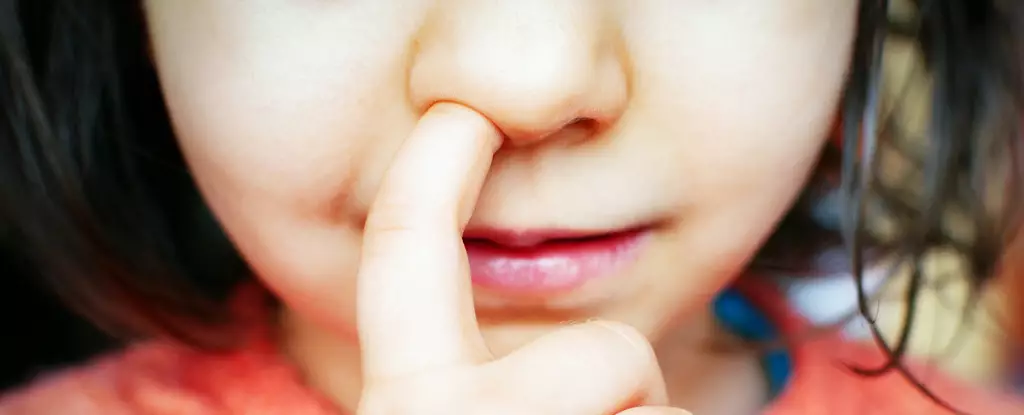In a landscape filled with mysterious ailments, dementia stands out for its complexity and the devastating impact it has on individuals and families alike. A groundbreaking study released in 2022 has drawn attention to a potential, albeit tenuous, connection between an everyday habit—nose picking—and an increased risk of developing neurodegenerative conditions like Alzheimer’s disease. Although the findings stem from research conducted primarily on mice, they prompt serious consideration and investigation into how seemingly benign actions might influence our neurological health.
When we think of activities that could contribute to dementia, habits like a poor diet, lack of exercise, or smoking often spring to mind. However, this study unveils the possibility that a simple action like picking one’s nose could also play a role—emphasizing that the portal to our brain may be less protected than we ever realized. The study suggests that when the delicate tissues inside the nose are damaged, it opens a “gateway” for harmful bacteria, such as Chlamydia pneumoniae, to reach the brain, potentially triggering detrimental changes that mirror the early signs of Alzheimer’s.
How Bacteria Could Lead to Brain Damage
The research led by neuroscientist James St John and his team at Griffith University demonstrates not just how bacteria invade the brain but the speed at which they can multiply once they enter. Using a mouse model, they found that the presence of C. pneumoniae within the nasal cavity not only led to infections but also resulted in increased deposits of amyloid-beta protein—a characteristic hallmark of Alzheimer’s pathology. This alarming speed, where infection can occur within 24 to 72 hours, raises fresh concerns about how much our day-to-day actions impact neurological systems.
Interestingly, amyloid-beta is often viewed as a sort of immune response to infections. The study raises critical questions about whether the overproduction of this protein is an inherent protective mechanism that could become harmful if left unchecked. By drawing parallels between infection and cognitive decline, the research highlights how interconnected our bodily systems are and how a minor habit could potentially serve as a catalyst for larger health issues.
The Implications for Human Health
As with many scientific advancements, the findings leave much to be explored. Importantly, the impact of C. pneumoniae on the human population remains largely uncharted, and there is a distinct lack of data confirming whether the same pathogen can wreak similar havoc in human brains as seen in mice. Despite this uncertainty, neuroscientists urge caution. Nose picking—while considered innocuous by many—may introduce more risks than previously assumed.
Moreover, considering that up to 90% of people engage in this behavior at some point, the implications are significant. The prospect that something so common may have unforeseen negative consequences encourages a broader dialogue about personal hygiene habits and their potential health ramifications. The notion that bacteria can traverse the nasal pathways and directly affect brain health puts increased pressure on researchers to further investigate the risks associated with these everyday actions.
Future Directions in Dementia Research
The call for additional research into how nasal tissues respond to bacteria is compelling. St John emphasizes this necessity, advocating for experimental studies on humans to verify the existence of similar pathways. The urgency is apparent as the global population ages, with projections indicating a dramatic rise in dementia cases in the coming decades. Thus, understanding multifaceted contributors beyond merely age is vital for effective prevention and treatment strategies.
Investigations should also delve into environmental factors and their potential roles in neurodegenerative diseases. As St John mentions, the interplay between genetic predispositions and individual habits plays a crucial role in the development of Alzheimer’s. Future studies could illuminate whether certain environmental exposures, combined with microbiological intrusions, synergistically elevate risk levels, paving the way for innovative prevention strategies.
In light of this research, it may be time for society to reconsider its approach to typically unremarkable habits. As anecdotal as it may sound, perhaps we should think twice before indulging in that casual nose pick—balancing comfort against the intriguing, if concerning, links emerging from contemporary neuroscience.

